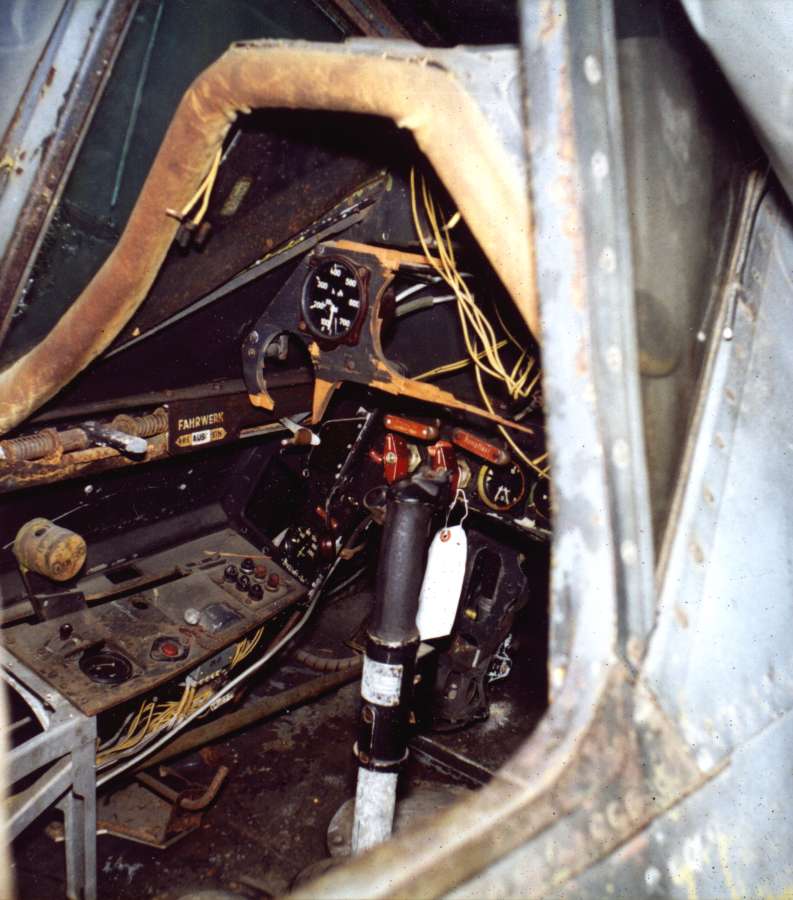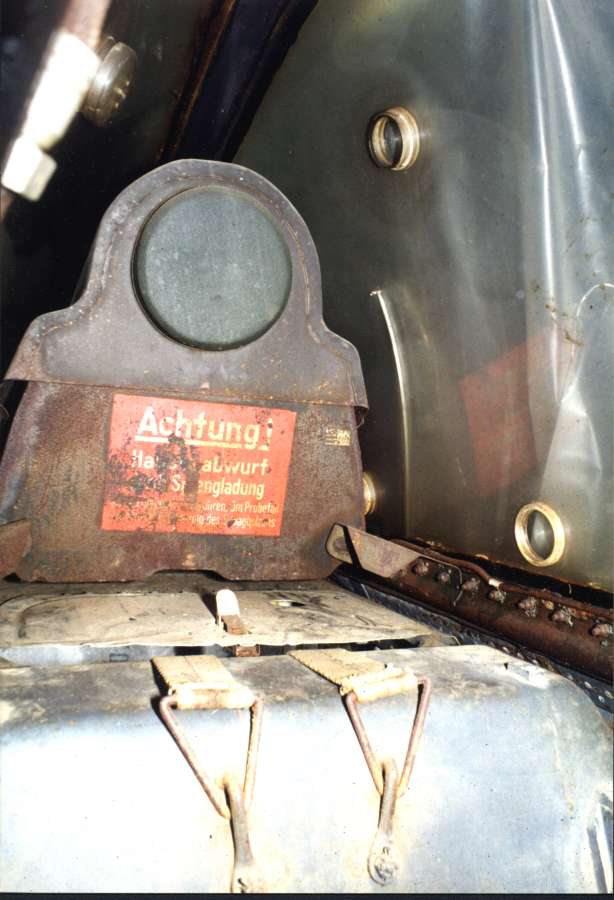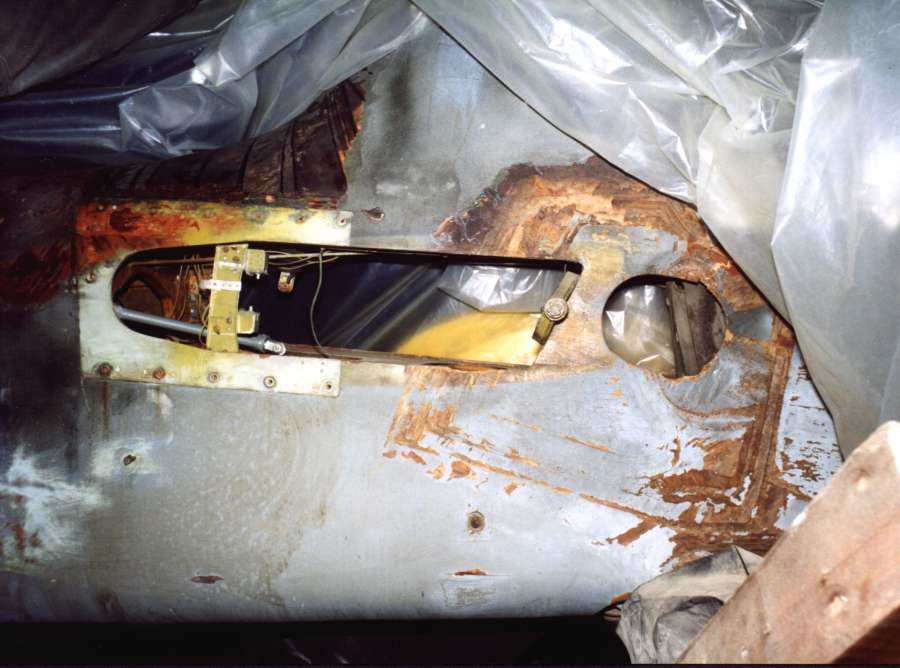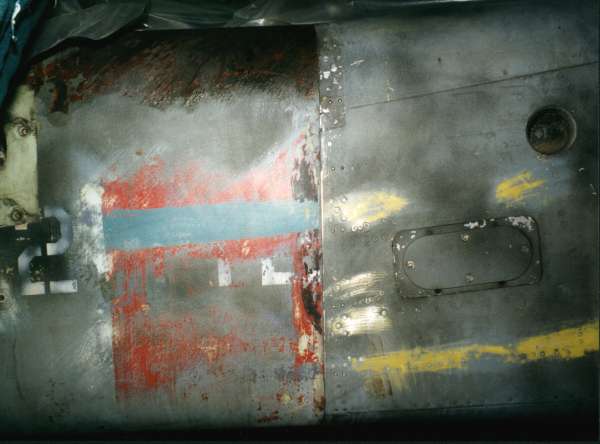 |
| The Cockpit The cockpit was damaged but nevertheless still contained many of the instruments, the paint was original and gives a good reference to the black-grey RLM 66 colour. |
| Deep Storage at Garber Deep Storage means just that, these are aircraft stored and not on public view, consequently they are hard to get to and photography conditions weren't ideal. |
 |
| The seat had been removed giving a view into the storage compartment, the seat belts and their mountings |
 |
| The main instrument panel was smashed - but it was all original! |
 |
 |
 |
| The Canopy To cope with the cold at high altitude and the heat in a pressurised cockpit, the Ta 152 H had a 'double-glazed' canopy to prevent misting, the two perspex layers were held apart by 3 inserts on each side. The canopy was also damaged. On the sides there are clips which engage on lugs which hold the canopy firmly in place when closed, again a necessity for the pressurised cockpit. |
 |
 |
| The Tail Area and Rudder. The rudder was high on the wing, almost impossible to photograph. The wooden tail assembly used on some aircraft, which was in dire need of restoration, did away for the need for a 0.5m metal insert (as found on the D9) to lengthen the fuselage. |
 |
| Rear Fuselage from the starboard side, the join between wooden tail and the metal fuselage is evident. The red and yellow paint was a remnant of the JG301 RVG bands. You can also see the remains of the US applied code T2-112 (originally the aircraft was FE-112, Foreign Equipment, later changed to T2, the Technical Intelligence section responsible for German aircraft evaluation). The rectangular panel, which has had plate screwed over it, is where the identification signal flare chutes were located. Above that, to the right, the circular lifting hole. |
| Rear Fuselage from the port side. The horizontal tailplane would have been mounted here. The structure of the wooden unit shows up clearly |
| Copyright C Silverlight, 2001. |
| Go To: |